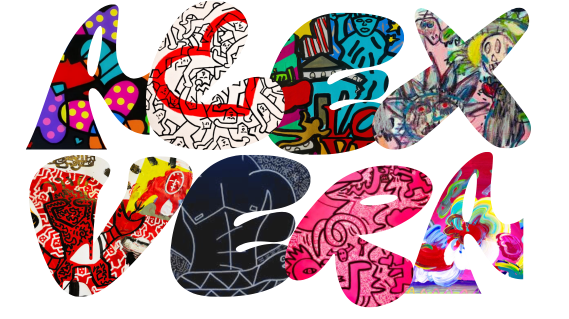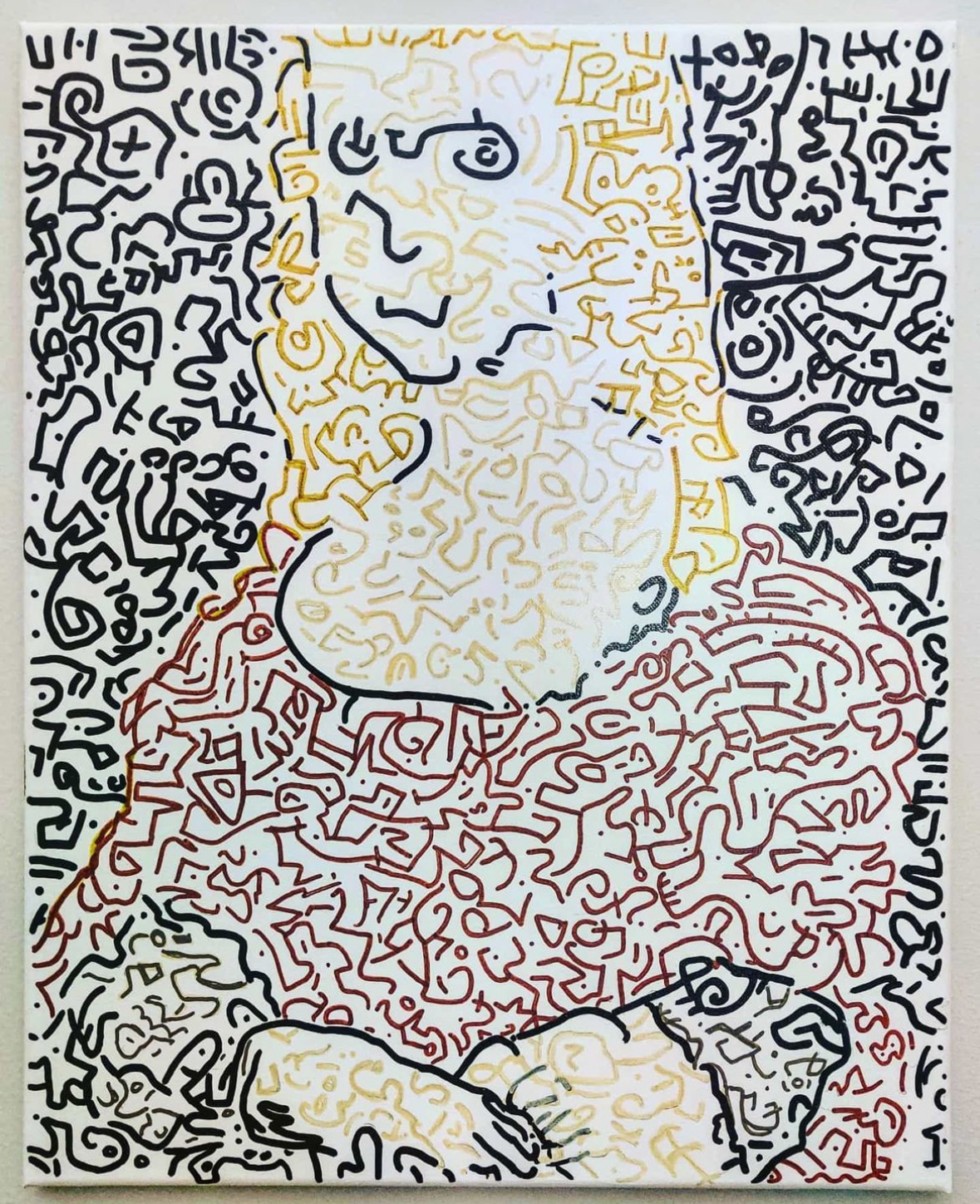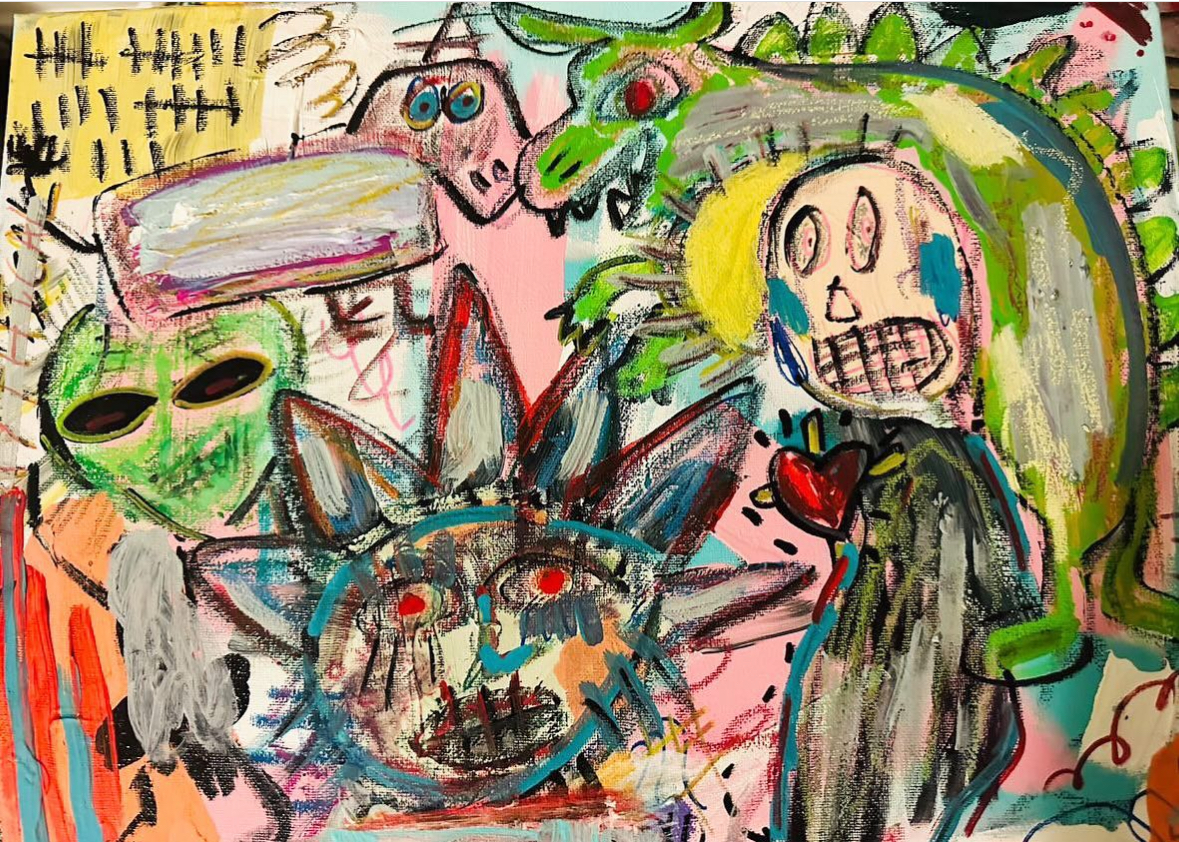Pop art is a vibrant and colorful movement that emerged in the mid-1950s. It celebrates the ordinary and transforms everyday objects into works of art. Famous pop art is known for its bold colors, vibrant designs, and use of popular culture imagery.
The movement gained popularity due to its unique style that challenged traditional art forms and its ability to reflect the zeitgeist of the times. The movement’s most famous works continue to inspire artists and captivate audiences to this day.
Things To Know About Pop Art
- Pop art emerged in the mid-1950s as a celebration of the ordinary.
- Famous pop art is known for its bold colors and use of popular culture imagery.
- The movement challenged traditional art forms and reflected the zeitgeist of the times.
- The most famous works of pop art continue to inspire artists and captivate audiences.
- Pop art remains a significant movement in contemporary art.
Exploring Iconic Pieces
Famous pop art boasts a plethora of iconic pieces that have transcended time and culture. These artworks have become synonymous with the genre, representing the vibrant and colorful nature of pop art. Let’s explore some of these masterpieces and the artistic techniques used to create them.
Andy Warhol’s Campbell Soup Cans
One of the most recognizable pop art pieces is undoubtedly Andy Warhol’s Campbell Soup Cans. This series of canvases, first exhibited in 1962, features thirty-two paintings of Campbell’s Soup cans, each one depicting a different flavor. Warhol’s use of repetition and consumer imagery challenged the traditional notions of art and elevated mundane objects into the realm of high art. The Campbell Soup Cans series is a quintessential example of the pop art movement, capturing the essence of the era’s consumer culture.
Roy Lichtenstein’s Whaam!
Another iconic piece of pop art is Roy Lichtenstein’s Whaam!, a diptych painted in 1963. This artwork features a dramatic comic book-style image of a fighter jet firing a missile, surrounded by onomatopoeic words like “WHAM!” and “BRAKKA-THOOM!”. Lichtenstein’s work often played with comic book clichés, and Whaam! is considered one of his most famous and dynamic pieces. The bold colors and graphic lines of Whaam! embody the spirit of pop art and continue to inspire contemporary artists today.
Claes Oldenburg’s Giant Three-Way Plug
Claes Oldenburg’s Giant Three-Way Plug, created in 1970, is another iconic piece of pop art. This sculpture is an oversized version of a three-pronged electrical plug, standing at over two meters tall. Oldenburg’s art focused on the banal objects of everyday life, exaggerating their size and meaning to create a sense of whimsy. The Giant Three-Way Plug is a testament to Oldenburg’s unique style and his contribution to the pop art genre.
Comparing the Artists’ Techniques
While each of these artworks is iconic in its own right, the techniques used by the artists are quite different. Warhol relied heavily on repetition and a screen-printing technique, while Lichtenstein used Ben-Day dots and bold lines to mimic comic book imagery. Oldenburg’s approach was more three-dimensional, and his sculptures often featured soft materials like vinyl and foam. Despite these differences, all three artists shared the common goal of elevating everyday objects and imagery into objects of art.
Influential Artists in Pop Art
Pop art has produced some of the most influential artists in the history of modern art. These artists were able to create works that were not only visually striking, but also deeply meaningful and culturally significant. Here are some of the most influential pop art artists:
| Artist | Notable Works |
|---|---|
| Andy Warhol | Campbell’s Soup Cans, Marilyn Monroe, Elvis Presley |
| Claes Oldenburg | Soft Toilet, Giant BLT, Apple Core |
| Roy Lichtenstein | Whaam!, Drowning Girl, Brushstrokes |
| Keith Haring | Untitled, The Radiant Baby, Crack is Wack |
| Richard Hamilton | Just what is it that makes today’s homes so different, so appealing?, My Marilyn, Swingeing London |
These artists had a significant impact on the pop art movement and continue to influence contemporary artists worldwide. Their unique styles and techniques continue to inspire new generations of artists, ensuring that the genre will continue to evolve and thrive in the years to come.
Noteworthy Moments in Pop Art History
The pop art movement of the 1950s and 60s was marked by a series of noteworthy moments that propelled the genre into the mainstream. From exhibitions to collaborations, these events shaped the trajectory of pop art and solidified its place in art history.
The First Pop Art Exhibition
One of the most significant moments in pop art history was the first pop art exhibition held at the Galleria Lawrence in Rome, Italy in 1956. Curated by art critic and historian Mario Schifano, the exhibition featured works by Eduardo Paolozzi, Richard Hamilton, and other renowned pop artists. The show marked the emergence of pop art as a significant artistic movement and garnered attention from art enthusiasts worldwide.
Collaborations with Popular Culture Icons
Pop art’s influence extended beyond the art world, as artists collaborated with popular culture icons to create iconic works of art. One notable collaboration was between Andy Warhol and musician Lou Reed. Warhol designed the famous album cover for Reed’s 1972 album “Transformer,” which featured a striking image of a bright yellow banana. The album cover became an emblematic symbol of pop art’s impact on popular culture.
Pop Art Goes International
Pop art’s popularity continued to grow throughout the 1960s and spread beyond the United States and the United Kingdom. In 1963, the “Nouveau Realisme” exhibition in Paris featured works by pop artists from around the world, including France, Italy, and Japan. This exhibition showcased the global reach of pop art and solidified its position as a prominent artistic movement.
Pop Art and Feminism
Pop art also played a significant role in the feminist art movement of the 1970s. Female pop artists, such as Marisol Escobar and Rosalyn Drexler, challenged traditional gender roles and explored themes of sexuality and objectification in their work. Their contributions to pop art and feminism continue to inspire contemporary artists.
The Legacy of Pop Art
Pop art’s impact on art history and popular culture cannot be overstated. Its vibrant colors, iconic imagery, and celebration of popular culture continue to influence artists across various mediums. From street art to fashion, the legacy of pop art lives on in the creative expressions of today.
Celebrated Pop Art Trends
Pop art is renowned for its vibrant colors, bold imagery, and innovative techniques. Throughout the years, different trends within this genre have emerged, each with its unique style and cultural significance. From the iconic Campbell’s Soup Cans by Andy Warhol to Roy Lichtenstein’s comic-inspired works, pop art has captured the popular imagination and influenced the broader art world.
Neo-Pop Art
One of the most notable trends within pop art is Neo-Pop Art. This style emerged in the 1980s and drew inspiration from the consumer culture of the time. Artists such as Jeff Koons produced large-scale sculptures of everyday objects, including balloon animals and household appliances, blurring the line between high and low art. This trend was characterized by a playful and ironic approach to consumerism and materialism.
Street Art
Another celebrated trend within pop art is Street Art. This style emerged in the late 20th century and is often associated with urban environments and public spaces. Street artists such as Banksy and Shepard Fairey use a range of media, including stencils and spray paint, to create striking and politically charged works. Street art blurs the line between fine art and graffiti, providing a voice for marginalized communities and challenging the boundaries of traditional art spaces.
Postmodern Pop Art
Postmodern Pop Art emerged in the 1980s and challenged the conventions of traditional pop art. This style drew inspiration from a range of sources, including art history, popular culture, and mass media. Artists such as Cindy Sherman and Barbara Kruger used photography and collage to critique gender roles, consumerism, and the art world itself. This trend emphasized the role of the artist as a cultural commentator, challenging viewers to question their assumptions and beliefs.
Whether it’s Neo-Pop Art, Street Art, or Postmodern Pop Art, the celebrated trends within pop art continue to inspire contemporary artists and captivate audiences around the world. Through their bold imagery and innovative techniques, these trends have shaped the cultural landscape of the 20th and 21st centuries, leaving an indelible mark on the art world.
Well-Known Pop Art Collectors
Pop art has garnered a massive following over the years, with many art enthusiasts and collectors seeking to own one or more pieces. This section will introduce you to some of the well-known pop art collectors, highlighting their impact on the market, and the value of these artworks.
| Collector | Notable Collection Pieces |
|---|---|
| Elton John | Electric Chairs by Andy Warhol |
| Steven A. Cohen | Triple Elvis by Andy Warhol |
| Philip Niarchos | Coca-Cola by Andy Warhol |
| Stefan T. Edlis | Brillo Box by Andy Warhol |
Elton John is a well-known pop art collector who has amassed an impressive collection of artworks over the years. His collection includes pieces by renowned pop artists like Roy Lichtenstein, Keith Haring, and Andy Warhol. One of his notable collection pieces is Electric Chairs by Warhol, which he purchased for $6 million in 2001.
Steven A. Cohen is another prominent pop art collector who has invested heavily in the genre. He is the owner of one of the largest private art collections in the world, which includes several iconic pop art pieces. One of his notable collection pieces is Triple Elvis by Andy Warhol, which he purchased for $81.9 million in 2014.
Philip Niarchos is a well-known art collector and heir to the Greek shipping fortune. He has spent millions of dollars on art pieces over the years, with his collection including works by renowned pop artists like Andy Warhol, Jean-Michel Basquiat, and Jeff Koons. One piece in his collection that stands out is Coca-Cola by Andy Warhol, which he purchased for $57.2 million in 2013.
Stefan T. Edlis is an art collector and philanthropist known for his impressive collection of contemporary artwork. His collection features several pop art pieces by artists like Andy Warhol and Jasper Johns. One of his notable collection pieces is Brillo Box by Andy Warhol, which he purchased for $3 million in 2002.
These collectors and many others have contributed to the growing popularity and value of pop art. Their notable collections and investments have propelled pop art into the mainstream and solidified its place in the art world.
Influence of Pop Art in Popular Culture
Pop art has had a significant impact on popular culture, with its vibrant colors and bold designs becoming iconic symbols around the world. From fashion and music to advertising and design, pop art has permeated various aspects of society, making it an influential cultural force.
One of the most recognizable examples of pop art in popular culture is the use of Andy Warhol’s Campbell’s Soup Cans in advertising. The vibrant colors and bold design of the cans have become synonymous with the pop art movement and have been used in countless advertisements and marketing campaigns over the years.
Pop art has also had a significant influence on fashion, with designers incorporating bold colors and graphic designs into their collections. The use of pop art-inspired prints and patterns has become a staple in modern fashion, with designers such as Jeremy Scott and Moschino incorporating pop art elements into their designs.
Furthermore, pop art has played a significant role in music, with artists using bold colors and graphics in their album covers and concert posters. The Beatles, for instance, famously used pop art designs in their album covers, and David Bowie incorporated pop art elements into his stage costumes and performances.
Overall, pop art’s influence on popular culture continues to be felt today, with its bold designs and iconic imagery inspiring contemporary artists and designers. It remains a testament to the enduring legacy of this remarkable movement.
Pop Art’s Enduring Legacy
The impact of famous pop art can still be seen today, as it continues to influence contemporary art and popular culture. This legendary genre has left an indelible mark on the art world, shaping the way we view and interpret art.
The vibrant colors and iconic imagery of pop art continue to captivate audiences worldwide, showcasing the genre’s enduring appeal. The movement’s innovative techniques and bold styles have inspired artists across generations, solidifying its place in the pantheon of legendary art.
From Andy Warhol’s iconic Campbell’s Soup cans to Roy Lichtenstein’s comic-inspired art, the pop art movement has produced some of the most recognizable and celebrated artworks of the 20th century.
| Artist | Notable Works |
|---|---|
| Andy Warhol | Campbell’s Soup Cans, Marilyn Monroe Series, Coca-Cola Series |
| Roy Lichtenstein | Whaam!, Drowning Girl, Oh, Jeff…I Love You, Too…But |
| Claes Oldenburg | Giant BLT, Soft Toilet, Spoonbridge and Cherry |
The innovative concepts and techniques that emerged during the pop art movement have continued to influence contemporary art, design, and fashion. The genre’s enduring legacy can be seen in the works of contemporary artists such as Takashi Murakami and Jeff Koons, who have adopted the movement’s bold approach and vibrant colors.
“I’d prefer to remain a mystery. I never like to give my background and, anyway, I make it all up differently every time I’m asked.” – Andy Warhol
Pop art’s influence extends beyond the art world, permeating popular culture in various forms. From fashion and music to advertising and design, the movement’s impact can be seen in various aspects of society.
The legacy of famous pop art will continue to inspire and influence artists and audiences for generations to come, solidifying its place as one of the most vital and significant art movements of the 20th century.
Pop Art And What It Is
Famous pop art has left an indelible mark on the art world. Its vibrant colors, iconic imagery, and cultural significance continue to captivate audiences all over the world.
Throughout this article, we explored the various aspects of famous pop art, from its celebrated trends and influential artists to its enduring legacy. We saw how this genre has permeated popular culture and continues to inspire contemporary artists today.
As we conclude this article, we cannot help but appreciate the significance of famous pop art and its impact on the world of art. Its ability to reflect and comment on popular culture while at the same time challenging traditional artistic norms makes it a truly remarkable genre.
Keep Exploring the World of Famous Pop Art
If you’ve enjoyed this article, we encourage you to keep exploring the world of famous pop art. Visit your local art galleries and exhibitions to experience some of these iconic artworks in person. Join online forums and discussions to engage with fellow enthusiasts and learn more about this genre. Who knows, you might just discover your new favorite artist or artwork!
Pop Art FAQs
What is pop art?
Pop art is an art movement that emerged in the 1950s and 1960s, characterized by its vibrant colors, bold imagery, and the incorporation of popular culture references. It often incorporates elements from advertising, consumer products, and mass media.
Who are some famous pop art artists?
Some famous pop art artists include Andy Warhol, Roy Lichtenstein, Claes Oldenburg, and Jasper Johns. These artists were instrumental in shaping the pop art movement and are renowned for their iconic artworks.
What are some iconic pop art pieces?
Some iconic pop art pieces include Andy Warhol’s Campbell’s Soup Cans, Roy Lichtenstein’s Whaam!, Claes Oldenburg’s The Store, and Jasper Johns’ Flag. These artworks have become synonymous with the pop art movement and are celebrated for their cultural significance.
How did pop art influence popular culture?
Pop art had a significant influence on popular culture. It blurred the lines between high and low art, making art more accessible to the masses. Its vibrant and relatable imagery infiltrated various aspects of popular culture, such as fashion, music, advertising, and design.
What is the enduring legacy of pop art?
The enduring legacy of pop art lies in its continued relevance and impact on the art world. Its innovative techniques, bold imagery, and exploration of popular culture have influenced subsequent generations of artists. Pop art remains a celebrated genre that continues to captivate audiences worldwide.







